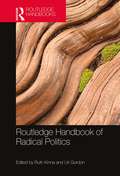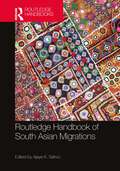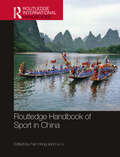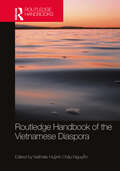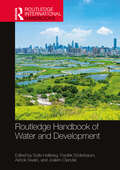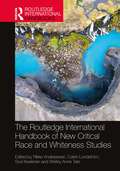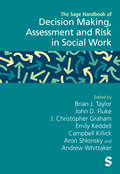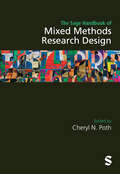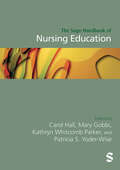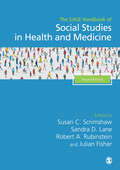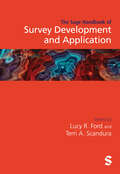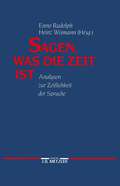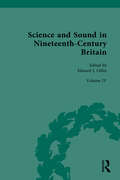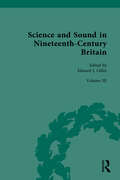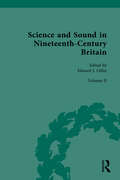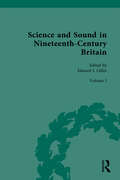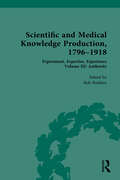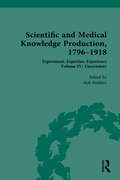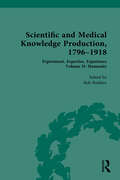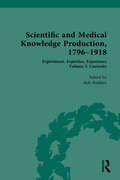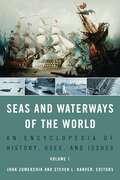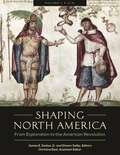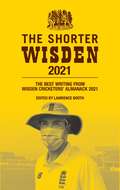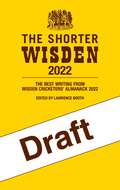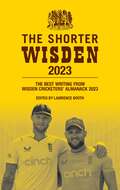- Table View
- List View
Routledge Handbook of Radical Politics
Successive waves of global protest since 1999 have encouraged leading contemporary political theorists to argue that politics has fundamentally changed in the last twenty years, with a new type of politics gaining momentum over elite, representative institutions. The new politics is frequently described as radical, but what does radicalism mean for the conduct of politics? Capturing the innovative practices of contemporary radicals, Routledge Handbook of Radical Politics brings together leading academics and campaigners to answer these questions and explore radicalism’s meaning to their practice. In the thirty-five chapters written for this collection, they collectively develop a picture of radicalism by investigating the intersections of activism and contemporary political theory. Across their experiences, the authors articulate radicalism’s critical politics and discuss how diverse movements support and sustain each other. Together, they provide a wide-ranging account of the tensions, overlaps and promise of radical politics, while utilising scholarly literatures on grassroots populism to present a novel analysis of the relationship between radicalism and populism. Routledge Handbook of Radical Politics serves as a key reference for students and scholars interested in the politics and ideas of contemporary activist movements.
Routledge Handbook of South Asian Migrations
Routledge Handbook of South Asian Migrations presents cutting-edge research on South Asian migrants written from a diverse theoretical and methodological perspective by leading scholars from around the world. This book provides a comprehensive understanding of how South Asians negotiate and promote South Asian culture both within and outside the region while undergoing several challenges during the process of migration. The Handbook covers many dimensions of South Asian migrations written by leading scholars from across the world, including but not limited to sociology, history, anthropology, economics, political science, geography, education, psychology, literature, and cultural studies. Divided thematically into five broad sections the chapters critically analyse some of the pertinent issues of South Asian migrations: • Contextualizing South Asian Migrations • Migration, Language, and Identity • Politics of Migration and Development • Gender, Culture, and Migration • Migration, Diaspora, and Transnationalism Addressing these issues from a multidisciplinary, multigenerational, multiracial, and multi-ethnic perspective, the Routledge Handbook of South Asian Migrations fills a gap in the literature and is an invaluable resource for students and scholars throughout the social sciences and humanities.
Routledge Handbook of Sport in China (Routledge International Handbooks)
This is the first book to offer a comprehensive overview of the history and development of sport from the ancient to the contemporary era in China. It addresses the gap between the vibrant academic scholarship within China and the limited understanding of Chinese sport outside of the country. It opens different perspectives on Chinese sport and addresses a wide range of issues central to the development of sport in the context of Chinese culture, politics, economy, and society. It explores a diverse set of topics including the history of Chinese traditional sport, the rise of modern sport and the Olympic movement, sport and nationhood, sport and politics and international relations, sport and physical education, sport and economy and commerce, sport and social stratification and diversity, and sport leisure and tourism. It offers critical insights into the multifaceted world of China, past and present—a contribution to our collective knowledge and understanding of Chinese sport and society—and is useful reading for students, researchers, and professionals with an interest in the field of China and Chinese sport. This Handbook has been contributed to by a team consisting of 88 leading Chinese and Asian experts and scholars with varied backgrounds of studying and working in European, North American, and Australian universities, as well as Western scholars with expertise on China and its sports system and practice. It is composed of ten parts classified by different subjects. It provides a wide lens through which to better contextualise the relationships between China and the world within the global sport community. The Routledge Handbook of Sport in China is a vital resource for students and scholars studying the history, politics, sociology, culture and policy of sport in China, as well as sport management, sport history, sport sociology, and sport policy and politics. It is also valuable reading for those who are working in international sport policy making and sport organisations.
Routledge Handbook of the Vietnamese Diaspora
The Routledge Handbook of the Vietnamese Diaspora presents a comprehensive overview and analysis of Vietnamese migrations and diasporas, including the post-1975 diaspora, one of the most significant and highly visible diasporas of the late twentieth century.This handbook delves into the processes of Vietnamese migration and highlights the variety of Vietnamese diasporic journeys, trajectories and communities as well as the richness and depth of Vietnamese diasporic literary and cultural production. The contributions across the fields of history, anthropology, sociology, literary studies, film studies and cultural studies point to the diversity of approaches relating to scholarship on Vietnamese diasporas.The handbook is structured in five parts: Colonial legacies Refugees, histories and communities Migrant workers, international students and mobilities Literary and cultural production Diasporas and negotiations Offering multiple cutting-edge interpretations, representations and reconstructions of diaspora and the diasporic experience, this first reference work of the Vietnamese diaspora will be an invaluable tool for students and researchers in the fields of Asian Studies, Asian American Studies, Ethnic Studies, Refugee Studies, Transnational Studies and Migration and Diaspora Studies.
Routledge Handbook of Water and Development (Routledge International Handbooks)
Water is essential for human life and at the centre of political, economic, and socio-cultural development. This Routledge Handbook of Water and Development offers a systematic, wide-ranging, and state-of-the-art guide to the diverse links between water and development across the globe. It is organized into four parts: Part I explores the most significant theories and approaches to the relationship between water and development. Part II consists of carefully selected in-depth case studies, revealing how water utilization and management are deeply intertwined with historical development paths and economic and socio-cultural structures. Part III analyses the role of governance in the management of water and development. Part IV covers the most urgent themes and issues pertaining to water and development in the contemporary world, ranging from climate change and water stress to agriculture and migration. The 32 chapters by leading experts are meant to stimulate researchers and students in a wide range of disciplines in the social and natural sciences, including Geography, Environmental Studies, Development Studies, and Political Science. The Handbook will also be of great value to policymakers and practitioners.
The Routledge International Handbook of New Critical Race and Whiteness Studies (Routledge International Handbooks)
Since its foundation as an academic field in the 1990s, critical race theory has developed enormously and has, among others, been supplemented by and (dis)integrated with critical whiteness studies. At the same time, the field has moved beyond its origins in Anglo-Saxon environments, to be taken up and re-developed in various parts of the world – leading to not only new empirical material but also new theoretical perspectives and analytical approaches. Gathering these new and global perspectives, this book presents a much-needed collection of the various forms, sophisticated theoretical developments and nuanced analyses that the field of critical race and whiteness theories and studies offers today. Organized around the themes of emotions, technologies, consumption, institutions, crisis, identities and on the margin, this presentation of critical race and whiteness theories and studies in its true interdisciplinary and international form provides the latest empirical and theoretical research, as well as new analytical approaches. Illustrating the strength of the field and embodying its future research directions, The Routledge International Handbook of New Critical Race and Whiteness Studies will appeal to scholars across the social sciences and humanities with interests in race and whiteness.
The Sage Handbook of Decision Making, Assessment and Risk in Social Work
The SAGE Handbook on Decision Making, Assessment and Risk in Social Work provides a comprehensive overview of key strands of research and theoretical concepts in this increasingly important field. With 49 chapters and four section summaries, this Handbook describes the ‘state of the art’; discuss key debates and issues; and gives pointers on future directions for practice, research, teaching, management of services, and development of theoretical understandings. A key aim of this Handbook is to support the development of sound, applied knowledge and values to underpin reasoned professional judgement and decision making by social workers in practice and those in management and regulatory roles. With contributions from a global interdisciplinary body of leading and emerging scholars from a wide variety of roles, this handbook has been designed to be internationally generalisable and applicable to all major areas of social work. This Handbook provides a field-defining account of decision making, assessment and risk in social work which is unrivalled for its diversity and strength of coverage, and will be of value to social work researchers, teachers and practitioners, as well as to those in allied fields such as health care. Section 1: Professional Judgement Section 2: Assessment, Risk and Decision Processes Section 3: Assessment Tools and Approaches Section 4: Developing and Managing Practice Section 5: Concluding Section / Afterword
The Sage Handbook of Mixed Methods Research Design
With contributions from over 80 of the biggest names and rising stars of the field, this Handbook is an essential resource for anyone interested in the contemporary, emerging, and evolving practice of mixed methods research and scholarship. Exploring new and novel applications of existing mixed methods research design practices, the handbook provides comprehensive integration guidance while showcasing how design innovations inspire and contribute to investigating previously under-researched social issues and populations. Through its unique focus on design and the diverse contexts in which mixed methods research is being applied, this Handbook prepares researchers for the changing conditions in which they will conduct studies. Newcomers and seasoned mixed methods researchers alike will find this Handbook a go-to source for tools to think and act ‘complexively’ and creatively in research design. Using accessible language and illustrative examples, this Handbook is written for those with various roles and experience in mixed methods research design. The in-depth discussions led by the interdisciplinary group of 11 internationally renowned editorial section leads project our collective thinking of mixed methods research design into the future across the following six sections: Section 1: Inspiring Diversity and Innovation in Mixed Methods Design Section 2: The Craft of Mixed Methods Research Design Section 3: Expanding Mixed Methods Design Approaches Section 4: Designing Innovative Integrations with Technology Section 5: Navigating Research Cultures in Mixed Methods Design Section 6: Exploring Design Possibilities and Challenges for Mixed Methods Research
The Sage Handbook of Nursing Education
In the past several years, a revival of research devoted to nursing education has emerged. This emergence has changed the way many educators engage in their practice of working with learners; and learners have come to expect that they will have a rich learning experience designed to develop new (or enhance prior) knowledge, skills, and attitudes. The SAGE Handbook of Nursing Education provides a detailed map of the current discipline, with a carefully selected team of international contributors offering the latest thinking about education in nursing across key areas. This handbook will be a key resource for academic educators, as well as graduate and postgraduate learners.
The SAGE Handbook of Social Studies in Health and Medicine
With new chapters on key topics such as mental health, the environment, race, ethnicity and health, and pharmaceuticals, this new edition maintains its multidisciplinary framework and bridges the gap between health policy and the sociology of health. It builds upon the success of the first by encompassing a range of issues, studies, and disciplines. The broad coverage of topics in addition to new chapters present an engagement with contemporary issues, resulting in a valuable teaching aid. This second edition brings together a diverse range of leading international scholars with contributors from Australia, Puerto-Rico, USA, Guatemala, Germany, Sri Lanka, Botswana, UK, South Sudan, Mexico, South Korea, Canada and more. The second edition of this Handbook remains a key resource for undergraduates, post-graduates, and researchers across multidisciplinary backgrounds including: medicine, health and social care, sociology, and anthropology. PART ONE: Culture, Society and Health PART TWO: Lived Experiences PART THREE: Health Care Systems, Access and Use PART FOUR: Health in Environmental and Planetary Context
The SAGE Handbook of Survey Development and Application
The SAGE Handbook of Survey Development and Application provides a practical resource that researchers can go to for cutting-edge tools to ensure they are employing the best survey research techniques. This handbook not only covers the classic and innovational skills and approaches involved at every step of the survey research process, but also centres itself around applied, how-to guidance to aid readers in best practice. Chapters engage with a broad range of topics including sampling issues, approaches to establishment of measurement equivalence, and the use of online labour pools in survey development. With contributions from a global community of leading and emerging scholars across a wide variety of disciplines, this Handbook is focused on being applicable and accessible across the social sciences. Containing over 120 tables and figures, checklists and tutorial guides, The SAGE Handbook of Survey Development and Application will serve as a one stop resource for survey research. This handbook serves as a touchstone for a variety of fields such as Organizational Behavior, Industrial & Organizational Psychology, Management, Psychology, Educational Research, Marketing, Public Policy, and others. PART 1: Conceptual Issues and Operational Definition PART 2: Research Design Considerations PART 3: Item Development PART 4: Scale Improvement Methods PART 5: Data Collection PART 6: Data Management and Analysis PART 7: Research Production and Dissemination PART 8: Applications
Science and Sound in Nineteenth-Century Britain: Sound Transformer (Nineteenth-Century Science, Technology and Medicine: Sources and Documents #4)
Sound and Science in Nineteenth-Century Britain is a four-volume set of primary sources which seeks to define our historical understanding of the relationship between British scientific knowledge and sound between 1815 and 1900. In the context of rapid urbanization and industrialization, as well as a growing overseas empire, Britain was home to a rich scientific culture in which the ear was as valuable an organ as the eye for examining nature. Experiments on how sound behaved informed new understandings of how a diverse array of natural phenomena operated, notably those of heat, light, and electro-magnetism. In nineteenth-century Britain, sound was not just a phenomenon to be studied, but central to the practice of science itself and broader understandings over nature and the universe. This collection, accompanied by extensive editorial commentary, will be of great interest to students and scholars of the History of Science.
Science and Sound in Nineteenth-Century Britain: Sound in Context (Nineteenth-Century Science, Technology and Medicine: Sources and Documents #3)
Science and Sound in Nineteenth-Century Britain is a four-volume set of primary sources which seeks to define our historical understanding of the relationship between British scientific knowledge and sound between 1815 and 1900. In the context of rapid urbanization and industrialization, as well as a growing overseas empire, Britain was home to a rich scientific culture in which the ear was as valuable an organ as the eye for examining nature. Experiments on how sound behaved informed new understandings of how a diverse array of natural phenomena operated, notably those of heat, light, and electro-magnetism. In nineteenth-century Britain, sound was not just a phenomenon to be studied, but central to the practice of science itself and broader understandings over nature and the universe. This collection, accompanied by extensive editorial commentary, will be of great interest to students and scholars of the History of Science.
Science and Sound in Nineteenth-Century Britain: Philosophies and Epistemologies of Sound (Nineteenth-Century Science, Technology and Medicine: Sources and Documents #2)
Science and Sound in Nineteenth-Century Britain is a four-volume set of primary sources which seeks to define our historical understanding of the relationship between British scientific knowledge and sound between 1815 and 1900. In the context of rapid urbanization and industrialization, as well as a growing overseas empire, Britain was home to a rich scientific culture in which the ear was as valuable an organ as the eye for examining nature. Experiments on how sound behaved informed new understandings of how a diverse array of natural phenomena operated, notably those of heat, light, and electro-magnetism. In nineteenth-century Britain, sound was not just a phenomenon to be studied, but central to the practice of science itself and broader understandings over nature and the universe. This collection, accompanied by extensive editorial commentary, will be of great interest to students and scholars of the History of Science.
Science and Sound in Nineteenth-Century Britain: Sounds Experimental and Entertaining (Nineteenth-Century Science, Technology and Medicine: Sources and Documents #1)
Sound and Science in Nineteenth-Century Britain is a four-volume set of primary sources which seeks to define our historical understanding of the relationship between British scientific knowledge and sound between 1815 and 1900. In the context of rapid urbanization and industrialization, as well as a growing overseas empire, Britain was home to a rich scientific culture in which the ear was as valuable an organ as the eye for examining nature. Experiments on how sound behaved informed new understandings of how a diverse array of natural phenomena operated, notably those of heat, light, and electro-magnetism. In nineteenth-century Britain, sound was not just a phenomenon to be studied, but central to the practice of science itself and broader understandings over nature and the universe. This collection, accompanied by extensive editorial commentary, will be of great interest to students and scholars of the History of Science.
Scientific and Medical Knowledge Production, 1796-1918: Volume III: Authority
Increasingly, critics accused practitioners of hiding hubris behind their purported humanity and questioned whether an increasingly professional scientific community could retain its grip on the meaning of compassion. This volume presents a set of responses to this criticism and others, showing the extent to which the lived-experience of scientific practice became a justification in and of itself for the expression of social, political and cultural authority. Bare knowledge, as it was presented, came with an enormous social valuation. These sources show how that authority changed and grew over time.
Scientific and Medical Knowledge Production, 1796-1918: Volume IV: Uncertainty
This volume showcases doubt from within the scientific community itself. These sources dwell upon the moments at which ideas became challenged, when facts were revealed to be fiction, and when knowns reverted to unknowns. But the focus is not the ideas and facts themselves, but on the ways in which scientists adjusted themselves to new landscapes of uncertainty in their particular cultural and professional practices.
Scientific and Medical Knowledge Production, 1796-1918: Volume II: Humanity
This volume foregrounds humanity (in the sense of compassion or sympathy), which often supplied the motivation for medical experiment and scientific innovation. Though the results of experiments could not be known in advance, often the stated goal was the reduction of suffering, the cure of disease, or the easement of life. Increasingly, critics accused practitioners of hiding hubris behind their purported humanity and questioned whether an increasingly professional scientific community could retain its grip on the meaning of compassion.
Scientific and Medical Knowledge Production, 1796-1918: Volume I: Curiosity
This volume is divided according to moral themes within medicine and science. The sources represent dominant notes within the culture of knowledge production that capture the moral/emotional/social justification for the making of expertise through experiment. This volume focuses on curiosity, given as the scientist’s chief motivating factor for the finding of new facts, and as an essential character trait for anyone entering the scientific life. It is also the source of controversy and criticism, since curiosity alone increasingly looked amoral at best and immoral at worst, as the nineteenth century wore on.
Seas and Waterways of the World [2 volumes]: An Encyclopedia of History, Uses, and Issues [2 volumes]
This is the first comprehensive encyclopedia on the history of the vast and varied ways human beings have used the world's waterways for business, protection, and recreation.Seas and Waterways of the World: An Encyclopedia of History, Uses, and Issues offers a comprehensive introduction to humanity's historical reliance on the world's seas and waterways and how that reliance continues to evolve.Over the course of two volumes, this extraordinary resource describes the world's major nautical features, the wide variety of uses for those waterways, and a number of essential issues arising from water-borne commerce. The encyclopedia marks the emergence of the aquarium, cruise, energy, fishing, insurance, mining, trade, transportation, recreation, and sport industries, and includes entries on harbors, ports, and coastal development that play a part in the economics of commercial water use. Also included is coverage of a number of significant themes such as the rise and fall of the Erie Canal as the gateway to the Midwest, and the declining popularity of the Panama Canal.
Shaping North America [3 volumes]: From Exploration to the American Revolution [3 volumes]
This fascinating multivolume set provides a unique resource for learning about early American history, including thematic essays, topical entries, and an invaluable collection of primary source documents.In 1783, just months after the United States achieved independence from Great Britain, General George Washington was compelled to convince his officers not to undertake a military coup of the Congress of Confederation. Had the planned mutinous coup of the Newburgh Conspiracy gone forward, the American experiment may have ended before it even began. The pre-colonial and colonial periods of early American history are filled with accounts of key events that established the course of our nation's development. This expansive three-volume set provides entries on a wide variety of topics and themes in early American history to elucidate how the United States came to be. Written in straightforward language, the encyclopedic entries on social, political, cultural, and military subjects from the pre-Columbian period through the creation of the Constitution (roughly 1400–1790) will be useful for anyone wishing to deeply investigate the who, what, where, when, and why of early America. Additionally, the breadth of primary documents—including personal diaries, letters, poems, images, treaties, and other legal documents—provides readers with firsthand sources written by the men and women who shaped American history, both the famous and the less well known. Each of the three volumes also presents thematic essays on highlighted topics to fully place the individual entries within their proper historical context and heighten readers' comprehension.
The Shorter Wisden 2021: The Best Writing from Wisden Cricketers' Almanack 2021
The Shorter Wisden is a compelling distillation of what's best in its bigger brother – and the 2021 edition of Wisden is crammed, as ever, with the best writing in the game. Wisden's digital version includes the influential Notes by the Editor, and all the front-of-book articles.In an age of snap judgments, Wisden's authority and integrity are more important than ever. Yet again this year's edition is truly a “must-have” for every cricket fan. In essence, The Shorter Wisden is a glass of the finest champagne rather than the whole bottle.@WisdenAlmanack
The Shorter Wisden 2022: The Best Writing from Wisden Cricketers' Almanack 2022
The Shorter Wisden is a compelling distillation of what's best in its bigger brother – and the 2022 edition of Wisden is crammed, as ever, with the best writing in the game. Wisden's digital version includes the influential Notes by the Editor, and all the front-of-book articles.In an age of snap judgments, Wisden's authority and integrity are more important than ever. Yet again this year's edition is truly a “must-have” for every cricket fan. In essence, The Shorter Wisden is a glass of the finest champagne rather than the whole bottle.@WisdenAlmanack
The Shorter Wisden 2023: The Best Writing from Wisden Cricketers' Almanack 2023
The most famous sports book in the world, Wisden Cricketers' Almanack has been published every year since 1864. The selected writings from the 160th edition contained in this eBook offer trenchant opinion, compelling features and an authoritative voice on the worldwide game.The Shorter Wisden is a compelling distillation of what's best in its bigger brother – and the 2023 edition of Wisden is crammed, as ever, with the best writing in the game. Wisden's digital version includes the influential Notes by the Editor, and all the front-of-book articles.In an age of snap judgments, Wisden's authority and integrity are more important than ever. Yet again this year's edition is truly a “must-have” for every cricket fan. In essence, The Shorter Wisden is a glass of the finest champagne rather than the whole bottle.@WisdenAlmanack
